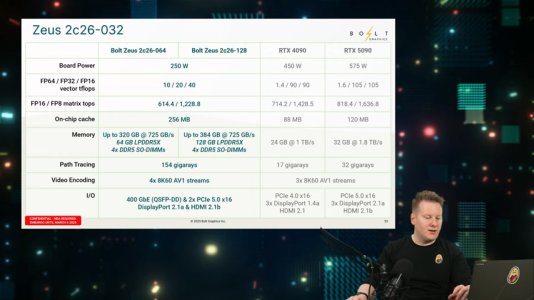Current AMD research
We are actively researching neural techniques for Monte Carlo denoising with the goal of moving towards real-time path tracing on AMD RDNA™ 2 architecture or higher GPUs. Our research sets a few aims as follows:
- Reconstruct spatially and temporally outstanding quality pixels with fine details given extremely noisy images rendered with 1 sample per pixel.
- Use minimal input by taking a noisy color image as input instead of separated noisy diffuse and specular signals.
- Handle various noise from all lighting effects with a single denoiser instead of multiple denoisers for different effects.
- Support both denoising-only and denoising/upscaling modes from a single neural network for wider use cases.
- Highly optimized performance for real-time path tracing at 4K resolution.
With these goals, we research a Neural Supersampling and Denoising technique which generates high quality denoised and supersampled images at higher display resolution than render resolution for real-time path tracing with a single neural network.
Our technique can replace multiple denoisers used for different lighting effects in rendering engine by denoising all noise in a single pass as well as at low resolution. Depending on use cases, a denoising-only output can be utilized, which is identical to 1x upscaling by skipping upscale filtering.
https://gpuopen.com/learn/neural_su...e=twitter&utm_medium=social&utm_campaign=nssd
Reconstructing pixels in noisy rendering
Denoising is one of techniques to address the problem of the high number of samples required in Monte Carlo path tracing. It reconstructs high quality pixels from a noisy image rendered with low samples per pixel. Often, auxiliary buffers like albedo, normal, roughness, and depth are used as guiding information that are available in deferred rendering. By reconstructing high quality pixels from a noisy image within much shorter time than that full path tracing takes, denoising becomes an inevitable component in real-time path tracing.
Neural Denoising
Neural denoisers [3,4,5,6,7,8] use a deep neural network to predict denoising filter weights in a process of training on a large dataset. They are achieving remarkable progress in denoising quality compared to hand-crafted analytical denoising filters [2]. Depending on the complexity of a neural network and how it cooperates with other optimization techniques, neural denoisers are getting more attention to be used for real-time Monte Carlo path tracing.
A unified denoising and supersampling [7] takes noisy images rendered at low resolution with low samples per pixel and generates a denoised as well as upscaled image to target display resolution. Such joint denoising and supersampling with a single neural network gives an advantage of sharing learned parameters in the feature space to efficiently predict denoising filter weights and upscaling filter weights. Most performance gain is obtained from low resolution rendering as well as low samples per pixel, giving more time budget for neural denoising to reconstruct high quality pixels.



